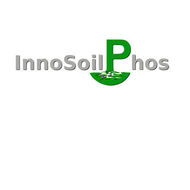A Look into the Past: Tracing Ancient Sustainable Manuring Practices by Thorough P Speciation of Northern European (2019)
Acksel , Baumann , Hu , Leinweber
Soil Systems, 3 (4), 72
doi:10.3390/soilsystems3040072
Abstract
Regionally restricted, hums-rich topsoils in Southwest Norway and the Baltic Sea region of Germany and Denmark were formed by inputs of various amendments (combustion residues and marine biomass) and, therefore, were classified as Anthrosols. For a deeper insight into the ancient management practices, we investigated the elemental and P-composition in the upper and underlying horizons from 12 soil profiles in the Jæren region, at the islands of Karmøy and Feøy (Norway), at the island of Fehmarn and the peninsula of Wagrien (Germany), and at the islands of Poel (Germany) and Sjaelland (Denmark). We used aqua regia digestion and the complementary methods of sequential P fractionation, phosphorus K-edge X-ray absorption near edge structure (P-XANES) spectroscopy, and 31P nuclear magnetic resonance (31P-NMR) spectroscopy. Results were compared with the composition of differently amended and/or un-amended soils from other studies. In addition, archaeological literature was used to confirm possible inputs of specific P-containing amendments in ancient agriculture. The P composition from SF of the Anthrosols in Norway (44% NaOH-Pi >1 8% NaOH-Po > 14% NaHCO3-Pi, 12% H2SO4-P > 7% NaHCO3-Po > 3% residual-P = 3% resin-P) and complementary archaeological literature provided strong indication for the use of peat, sheep manure, compost, and human excreta. The Anthrosols in the Jæren region have been formed from peat, which had been used as alternative bedding material and had been mixed with sheep and/or cattle manure. The P-composition in the Anthrosols at the island of Fehmarn and at the peninsula of Wagrien (42% H2SO4-P > 25% residual-P > 10% NaOH-Po, 8% NaOH-Pi: > 6% NaHCO3-Pi and NaHCO3-Po, 4% resin-P) resulted from the application of domestic cattle manure. This was strongly supported by archaeological findings of cattle bones in this region, as well as high proportions of Ca-P, as confirmed by P-XANES. The predominance of Po in the Anthrosols at the island of Poel and Sjaelland (31% NaOH-Po > 23% NaHCO3-Po, 21% H2SO4-P > 11% NaOH-Pi > 8% NaHCO3-Pi > 4% residual-P, 3% resin-P, in agreement with results from 31P-NMR) indicated low ancient inputs of various excrement or manure. This was supported by low livestock history at the island of Poel. In conclusion, these agricultural techniques can be considered as sustainable P recycling and soil amendment since they improved soil fertility for many generations.
